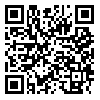BibTeX | RIS | EndNote | Medlars | ProCite | Reference Manager | RefWorks
Send citation to:
URL: http://jap.iums.ac.ir/article-1-5213-en.html
Background: One of disadvantages of axillary block is a long time gap between the performing the block and the appearance of the anesthesia required for surgery. This study aimed to to examine the effectiveness of adding 0.5% dextrose water (DW) to bupivacaine in brachial plexus block under the guide of a nerve stimulator and ultrasonography in hand and forearm surgeries. Methods: A total of 60 candidates for an axillary block were studied. In both groups bupivacaine 0.5% was used to achieve anesthesia with 0.9% normal saline (NS) in the first group and 0.5% DW in the second group as solvents. Sensory and motor blocks were documented after local anesthesia every 5 minutes within the first 30 minutes, every 10 minutes within the second 30 minutes, and every 15 minutes thereafter. Results: The time interval between the drug injection and anesthesia between the two groups was different statistically only for the median nerve (p=0.03), whereas the difference for the remaining nerves was not significant. Conclusion: In the present study adding 5% DW was only effective in the sensory block of the median nerve, with no significant difference with NS for the other nerves.
Received: 2015.05.15 | Accepted: 2016.12.30 | Published: 2016.12.30
| Rights and permissions | |
 |
This work is licensed under a Creative Commons Attribution-NonCommercial 4.0 International License. |



